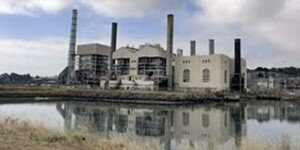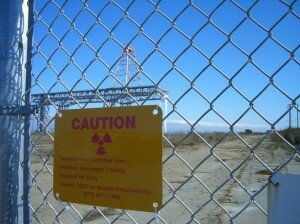Bayview Hunters Point (BVHP) is an ethnically diverse working-class neighborhood in southeast San Francisco with a rich cultural history. It has undergone numerous transformations over the last two hundred years, although not always beneficial to its residents. BVHP was once an area of pristine grasslands, woodlands, coastal scrub, streams, and marshes inhabited by the Ohlone. Their displacement and the destruction of other native inhabitants began with the arrival of the Spanish in the late 1770s.
Within decades, the region became pasture for cattle and other livestock. The neighborhood’s transformation as the City’s center of industrial and manufacturing activity also began at this time. From the mid 1800s through the mid 1900s, BVHP would be home to slaughterhouses, meat packing facilities, tanneries, wool pulleries, tallow works, fishing villages, shipbuilding and repair facilities, a power plant, the City’s largest wastewater treatment facility and a multitude of other manufacturing and industrial activities. The population grew throughout this era with the largest migration occurring during the Second World War when African Americans were recruited from the South to fill jobs created by wartime economic expansion. They would become and remain the dominant ethnicity in the neighborhood.
It was also during WWII that the US Navy took control of and expanded the shipyard, displacing residents and inhibiting economic growth. Surrounding hillsides were leveled to provide fill material for land expansion in response to a demand in city growth. Just after the war’s end until 1969, the Naval Radiological Defense Laboratory conducted research on the effects of radiation and decontaminated  shipping vessels exposed during atomic bomb testing. Some of the radioactive waste was disposed of in onsite landfills with no safeguards against leaching into the surrounding environment. In 1989, the shipyard would be declared a Superfund or hazardous waste site in need of extensive clean up .
shipping vessels exposed during atomic bomb testing. Some of the radioactive waste was disposed of in onsite landfills with no safeguards against leaching into the surrounding environment. In 1989, the shipyard would be declared a Superfund or hazardous waste site in need of extensive clean up .
With the neighborhood mostly dependent on the Naval Shipyard as the major economic driver, the increasing loss of jobs from the 1950s through its closure in 1974 would leave high unemployment rates that continue to plague the community. In addition, other social, economic, and environmental ills, including racial segregation and discrimination, substandard housing, deteriorating infrastructure and high levels of poverty, crime and violence, impacted the BVHP from the 1950s that worsened through the latter half of the century – these injustices remain to this day.
Building and redevelopment projects began in the 1990s and early 2000s but have been criticized for their lack of sustainability objectives including affordability and job creation for BVHP residents. The community has the highest number of children in San Francisco, yet has the least access to open space, high performing public schools, healthy food options and health care services to accommodate the population. Lifespans are on average 14 years shorter and infant mortality rates are higher for BVHP residents as compared to those living in wealthier San Francisco neighborhoods. Some disease rates are among the highest in the City including childhood and adult asthma, chronic obstructive lung disease, pneumonia, congestive heart failure, diabetes, and deaths from breast cancer.
Residents continue to be disproportionately exposed to hazardous substances in the surrounding air, soil, and water from both past and present industrial activities and the vehicular traffic associated with them. In some instances, residents live in close proximity to toxic emissions and pollution sources. BVHP is home to hundreds of brownfield sites or polluted abandoned properties, leaking underground fuel storage tanks, and EPA regulated hazardous waste handlers. Community residents are exposed to hundreds of toxic substances including particulates, asbestos, heavy metals, pesticides, petroleum hydrocarbons, polychrominated biphenyls (PCBS), and radioactive elements.
The EcoCenter at Heron’s Head Park represents a critical effort by a community experiencing significant environmental, social, and economic stresses, to launch a positive community response to the legacy left by the Navy, utility companies, industry, and decades of negligent land-use planning.
Together, bay.org with its principal partners, the A. Philip Randolph Institute San Francisco (APRI) and City College of San Francisco (CCSF), will engage the Southeast community in world-renowned environmental education, life-changing experiences and career development opportunities. With the guidance from our community-focused EcoCenter Advisory Committee, we will work towards a common goal for the EcoCenter to become a treasured resource in Southeast San Francisco and an epicenter for education, environmental justice, place-based learning, and green career development for San Francisco and beyond.
References:
BCA: Community Health [Internet]. 2009. San Francisco (CA): Black Coalition on AIDS: [cited 2014 March 31]. Available from: http://www.bcoa.org/health.html
Calvert, P. 2010. EcoCenter Strategic Plan. San Francisco(CA): Literacy for Environmental Justice.
EnviroStor Database. 2007. Clean up sites 94124 [Internet]. Sacramento(CA):Department of Toxic Substance Control; [cited 2014 March 31] . Available from: http://www.envirostor.dtsc.ca.gov/public/mapfull.asp?global_id=&x=-119&y=37&zl=18&ms=640,480&mt=m&findaddress=True&city=94124&zip=&county=&federal_
superfund=true&state_response=true&voluntary_cleanup=true&school_cleanup=true&ca_site=true&tiered_permit=true&evaluation
Found SF [date unknown]. Category: Bayview Hunters Point [Internet]. San Francisco (CA): Shaping San Francisco: [cited 2014 March 31]. Available from: http://foundsf.org/index.php?title=Category:Bayview/Hunter%27s_Point
Harder and Company Community Research. March 2012. Your Neighborhood at a Glance: Bayview-Hunters Point and Visitacion Valley. San Francisco (CA): Prepared for the San Francisco Department of Public Health, Health Care Services Master Plan Community Meeting.
Hargreaves Associates, Arc Ecology, Coastal Conservancy. May 2006. From Pollution to Parkland: Alternative for a Waterfront Park at Hunters Point Shipyard. San Francisco (CA): Arc Ecology.
Hester T and Harrison M. September 2004. Pollution, Health, Environmental Racism and Injustice:
A Toxic Inventory of Bayview Hunters Point, San Francisco. San Francisco (CA): Bayview Hunters Point Mothers Environmental Health & Justice Committee, Huntersview Tenants Association, Greenaction for Health & Environmental Justice.
Naval Facilities Engineering Command [date unknown]. Former Naval Shipyard Hunters Point [Internet]. Washington (DC): United States Navy: [cited 2014 March 31]. Available from: http://www.bracpmo.navy.mil/brac_bases/california/former_shipyard_hunters_point.html
San Francisco Asthma Task Force. October 2011. Asthma Task Force Report to the San Francisco Board of Supervisors: Recommendations to Promote Asthma Prevention and Control. San Francisco (CA): City and County of San Francisco.
SF Green Business. 2009. Explore the Directory [Internet]. San Francisco(CA):City and County of San Francisco; [cited 2014 March 31] . Available from: http://www.sfgreenbusiness.org/explore-the-directory/
US Census Bureau. 2010. American Fact Finder Community Facts [Internet]. Washington (DC): US Department of Commerce: [cited 2014 March 31]. Available from: http://factfinder2.census.gov/faces/nav/jsf/pages/index.xhtml
Weston Solutions. May 2012. Targeted Brownfields Assessment. Bayview – Hunters Point Industrial Area Brownfields Project. San Francisco, California Final Report. San Francisco (CA): Prepared for Environmental Protection Agency Region 9 by Weston Solutions Inc. Document Control Number: 20074.063.043.0003
Photo in upper left corner by TeleStar Logistics, Creative Commons.




